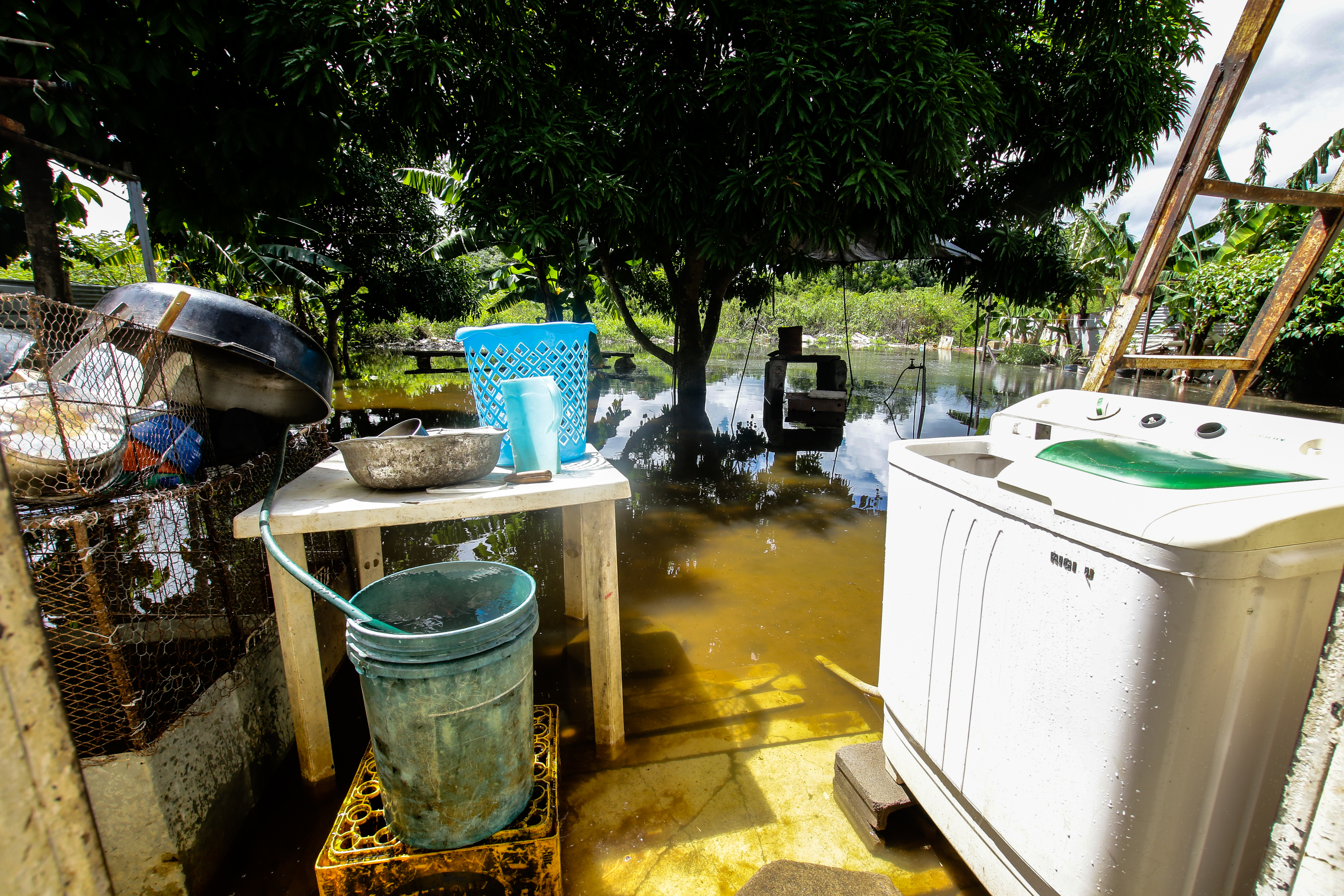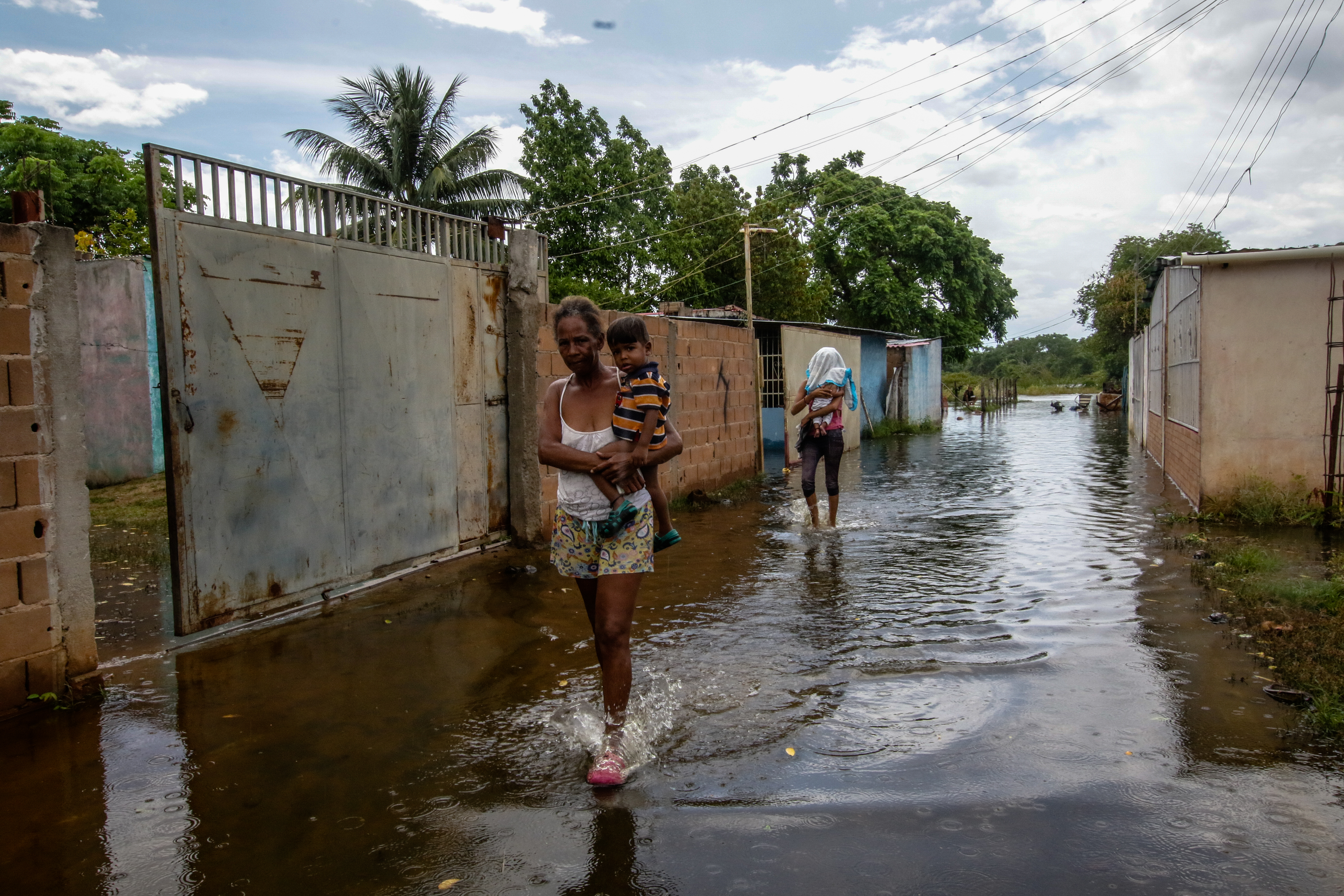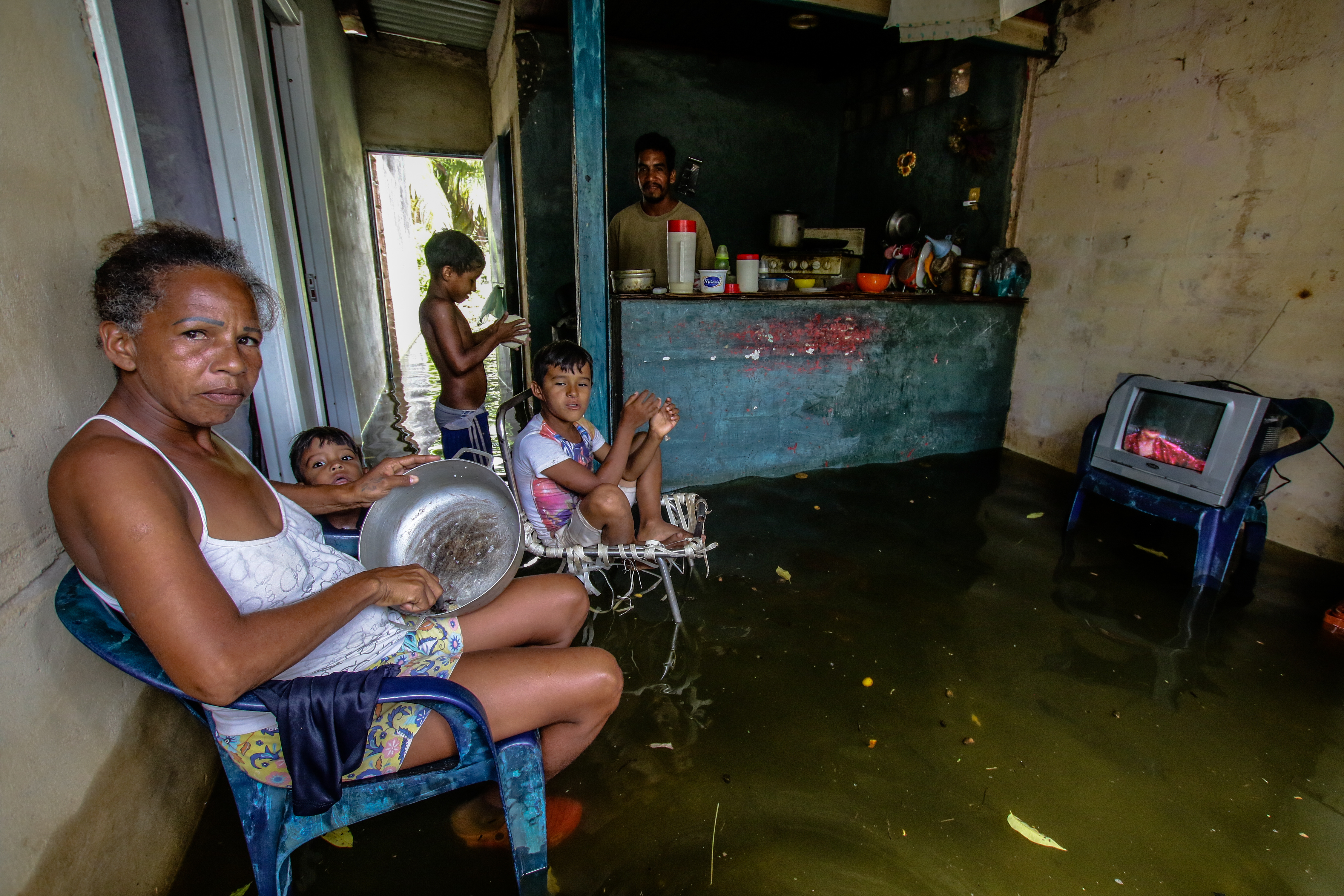Orinoco River Floods Ciudad Bolívar, Victims Have Nowhere to Go
The Orinoco river reached and surpassed the biggest flood level in its history. Meanwhile, the government's negligence has left 11,000 people without a place to stay or food on their tables.


Photos: William Urdaneta
In the week between August 20 and August 26, the Orinoco river reached and surpassed the biggest flood level in its history: 18.30 meters above sea level in Ciudad Bolívar. The previous record took place in 1976 and was 18.05 meters.
The majestic Orinoco river that flows through Bolívar is the core of the state’s hydric potential. In the last few weeks this flood has been a tragedy for over 11,000 affected citizens.The capital’s streets and the historical center are flooded by the water that stopped being in the background of their landscape and became an everyday sight. The impromptu sandbag dams have been unable to stop the water.
“In all these years hearing the stories of my grandparents and parents who lived and remember the ‘76 flood, I never imagined I’d see something like this,” said 36-year-old Angela Oronoz.
After this Thursday’s flood that wiped the sandbag dams along the historical center, authorities restricted the access of vehicles in the Orinoco promenade, as well as the presence of hawkers, visitors and fishers who stayed in the area watching the flood. In August 13, the Heres municipality was declared on red alert, communities such as Perro Seco, La Shell, La Toma, El Mereyal, El Edén and La Alameda are still flooded and had to be evacuated.
Despite the risk, many families have decided to stay in their homes.
Despite the risk, many families have decided to stay in their homes, due to the fear of losing their belongings and homes that have taken them years to build. “We’ve been adapting and deciding what we move to other neighbors’s or relative’s houses that aren’t flooded. Leaving is risky because we don’t know how uncomfortable shelters will be, especially because we have small children,” said Alexander Peña, who also fears that crime will take advantage of other people’s disgrace to rob empty homes, as some neighbors have already experienced.
Those who chose to go to shelters complain about their conditions and the uncertainty of how long they’ll have to stay there, as the Orinoco continues to rise almost daily.
This is Guillermo Salazar’s situation, who’s in a shelter located in the rural sector El Almacén in Ciudad Bolívar: “Sometimes they make promises and don’t come through. They sheltered us here, but they haven’t done anything to solve the problem,” he said regarding the State support amidst this emergency, adding that they’ve been given food only once in several weeks.
Along with Guillermo, El Almacén’s Bolivarian School Number 34 shelters over 30 families who have prepared the place the best they could with hammocks, mattresses, burners and hearths.
The flooding river also fans concerns about endemic diseases. The people sheltered at El Almacén have already reported several cases of malaria and dengue, but they’ve not be calculated, nor treated due to the lack of medical attention.
60 shelters have been set across Bolívar State to support the victims counted so far and those who could join later, since according to Civil Defense, the rainy seasons will continue for at least a couple of months.
The people sheltered at El Almacén have already reported several cases of malaria and dengue.
Even though Civil Defense, the firefighters and the Sanitary District have been deployed, as well as municipal and regional governments, food and medical attention have been insufficient to assist all the victims in the state thus far.
Ciudad Guayana, the same story every year
What started as a natural spectacle that attracted thousands of locals and tourists who wanted to see the rising water flow in the Macagua dam and the La Llovizna park, has become a new chapter of relocations, evictions and worries for the families of at least 20 affected Guayana communities.
Once more, the inhabitants of the Castillito strip experienced a flood that invaded their homes. “It’s the same every year. What we did at home was putting our belongings as high as possible so they wouldn’t get wet, but we won’t go to the shelter. We went last year but that’s too uncomfortable, we’d rather resist here,” said Andrés Jeremiah, inhabitant of El Cerrito sector, a community that suffers constant floods during rainy seasons year after year.
In addition to the communities located in the Castillito strip, there are other affected areas such as Campo Rojos, La Laja, Los Sabanales and Acapulco. It’s been a month since the Castillito strip’s inhabitants started suffering the flood and went to shelters set in nearby schools.
The story repeats itself year after year. These communities are settled along the shores of the Caroní river, a high-risk area that’s not fit for housing. The definitive relocation of 260 families living in the area would be a solution to the contingency caused by the rains, but after decades of promised housing projects, the neighbors are happy not to lose their homes and belongings.
Bolívar governor Justo Noguera Pietri shut down any chance of housing plans for affected sectors, saying that there won’t be any new housing units, that the old ones would be repaired and restructured, a poor measure that won’t outlast the next rainy season.
The governor announced investments through the Barrio Nuevo Tricolor program to make repairs in all affected homes: “We must tell the truth: we’re not planning any housing development.”
Luisa Larez lives in the José Gregorio Hernández community along with her four children and two grandchildren. They’ve all relocated to the shelter at the Raúl Leoni School since July 27: “They’ve helped us by bringing food boxes, but all we want is for the governor to come here and solve the situation. We can’t go through this every year.”
Larez added that last year, when the repercussions of the rains increased, they said that the flood was historic, “And look what’s happening this year. We don’t know if there will be another historic flood next year and we’ll have to leave again. We want to ask the governor how long we’ll have to live like this.”
Solutions locked and forgotten
The Ciudad Guayana dreamt and planned by experts from the Massachusetts Institute of Technology (MIT) has been forgotten. The first city in Latin America to be planned for perfect industrial, commercial, urban and environmental development survives in the plans stored for posterity in the archives of the Venezuelan Corporation of Guayana (CVG), which once managed the city.
Since water and rivers are an essential element for Guayana’s ecosystem, the urban plans include the necessary measures to prevent situations like those experienced in the last two decades by communities located along the Caroní river’s shores.
Urbanist Simón Yegres, representative of NGO Contraloría de lo Público y lo Urbano, points out that there are several instruments that could still be applied to solve the situation and prevent the scenario from repeating itself in 2019.
Improvisation is yet another enemy of the current administration, especially considering that the floods happen every year.
“In 1995, the Urban Planning Program set the guidelines about the situation in residential areas along the river shores; the Urban and Local Development Plan of 2006 established seven special plans, one of them is the Special Plan for Castillito.”
Yegres adds that improvisation is yet another enemy of the current administration, especially considering that the floods happen every year. “It’s not a situation that takes them by surprise, they should’ve thought of some sort of permanent solution already.”
María Nuria de Cesaris, also an urbanist, has worked for years in the CVG’s Urban Planning Department and was involved in the creation of the Urban and Local Development Plan (PDUL). Both specialists agree that this isn’t rocket science, it’s about implementing what many experts have already written. Regarding this, De Cesaris emphasized that the PDUL contains the estimates for the city’s requirements and services until 2026, which she says have been ignored in recent years, and this has brought contingencies caused by the rains and other aspects such as the collapse of basic services in general: “The public administration has been ineffective and that has opened the way for improvisation.”
In several occasions, De Cesaris has said that unregulated construction of houses, without any regard for urban parameters, and the passivity of authorities have caused these kinds of problems.
Without any long term solutions, the authorities continue to work to minimize the negative impact of the rains, in a season that’s just starting, hitting Cedeño, Caroní and Heres municipalities the hardest.
Meanwhile, representatives of the health sector are starting to caution about the need to massify medical attention campaigns in affected areas in view of the outbreak of endemic diseases common in this kind of situations due to stagnant water and the proliferation of mosquitoes and other animals that come out of the water.
The estimates made by the Civil Defense Risk Committee indicate that the river’s flooding levels will remain until late August, when they usually start to drop, and that they won’t go back to normal until November.
Caracas Chronicles is 100% reader-supported.
We’ve been able to hang on for 22 years in one of the craziest media landscapes in the world. We’ve seen different media outlets in Venezuela (and abroad) closing shop, something we’re looking to avoid at all costs. Your collaboration goes a long way in helping us weather the storm.
Donate











